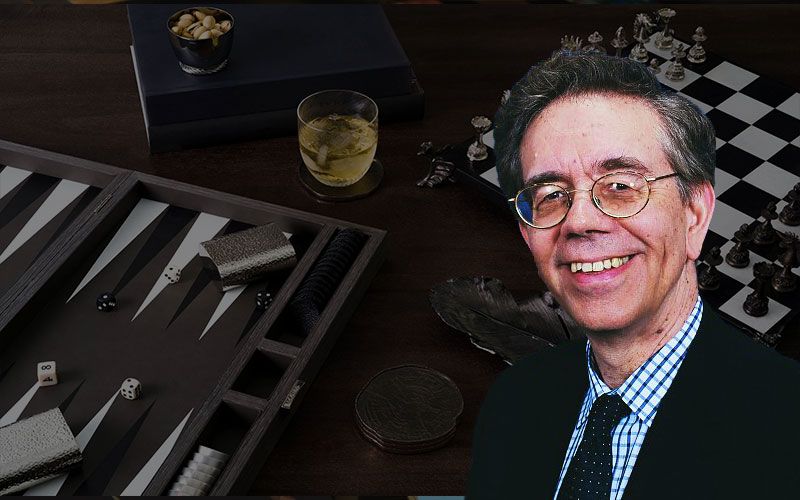
Loading board
Back at World Cup VI, in 1998, Kent Goulding and I introduced a ‘Quizgammon’ contest, consisting of a set of 30 problems taken from all phases of the game. Everyone who was interested paid an entry fee of $20 and sat down for an hour with their problems and answer sheet. After everyone handed in their solutions, Kent and I went over the answers and announced the winners. The event was an instant success. Players really liked the idea of matching wits, with the luck of the dice finally and thoroughly removed.
The idea caught on and Quizgammons and their variants are seen at a lot of tournaments nowadays. This position is taken from a Quizgammon contest in Boston in 2003 (won by Falafel, well ahead of the field). It was the hardest problem in that quiz, the only one that no one was able to solve over the board.
Here Black is bearing off against a busted deuce-point game. His bearoff position is all right but not great. The pile of checkers on the 6-point combined with the stripped 4-point indicates that Black may have trouble with shots and awkwardness somewhere down the road. Getting hit isn’t likely to cost Black the game, but it might spell the difference between winning a single game and winning a gammon.
At first glance, the position seems to offer a choice between a “safe” play, 6/1, which stays nicely even-ended, and a “bold(er)” play, 5/off, which gets a checker off but leaves the 4-point and 5-point stripped. On closer examination, another play pops up: 4/off 4/3, which gets a checker off and clears the 4-point, leaving spares on all the other points. This starts to look appealing because all the spares might let Black rip off a lot of checkers over the next few turns.
Most players stop their analysis at this point. Those are the only plays that don’t volunteer a shot, and volunteering a shot in the bearoff when you have many reasonable alternatives is – unthinkable?
Well, not quite unthinkable. It’s just very rare. But here’s a good example of when the rare becomes possible. Here are some of the features that argue for an unusual play:
- White has no board, so getting hit won’t lose the game.
- The gammon is a bit of a long shot, so Black wants to bear off in a hurry.
- His position is just awkward enough so that bearing off both quickly and safely will be hard to do.
Put all these factors together and a fourth play comes to mind: 4/off 1/off! This looks super-aggressive at first (volunteering a shot just to get another checker off), but if White hits he’s in a vulnerable position, with at least three and maybe four blots strung around the board. On reflection, this must be the best play to win a gammon, and that in turn raises another question. If Blacks rips two off, will White even hit with his deuces?
The answer to that question is – sometimes. White should hit with 2-1 and 2-2, because those numbers pick up the blot in his board, eliminating the direct shots. He should also hit with 2-6 and 2-5, because those numbers get the blot on the 23-point into the outfield, where it’s a little safe. The intermediate deuces, 2-3 and 2-4, neither safety the blot on White’s 3-point nor move the blot on White’s 23-point, and with those numbers White should pass up the hit and just move the checker on his 12-point.
Note also that when hitting is right, it’s mostly right by a tiny amount. Only with 2-2, which leaves only one blot around, is the hit massively correct. Compared to the best double match point play, 5/off, taking two off with 4/off 1/off costs about 1% winning chances in exchange for 5% more gammons, a very favorable trade. It’s a cute play, and a strong argument for looking carefully to make sure you’ve seen all the plausible plays. You can’t make a play that you never see.